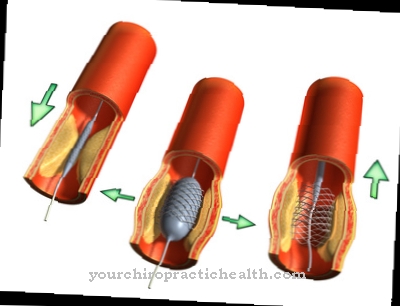The bioenergetic analysis represents a psychotherapeutic procedure, which is supposed to detect and solve energy blockages. The analysis is based on character studies. Today, bioenergetic analysis is embedded in all psychotherapeutic care.
What is Bioenergetic Analysis?

Bioenergetic analysis is a psychotherapeutic process that establishes the connection between psychological and somatic disorders.
It detects energy blockages and develops strategies to resolve them. The procedure was developed by the American doctor Alexander Lowen in 1947. Lowen was based on the findings of Siegmund Freud's psychoanalysis and the theory of the psychologist Wilhelm Reich. Wilhelm Reich further developed psychoanalysis for character analysis, using his knowledge of psychological and muscular armor. He described character formation as a mental defensive stance that leads to somatic complaints via physical tension.
According to his theory, the character develops through the isolation from external stimuli and internal urges. The resulting tension can be analyzed through physical postures. As part of the bioenergetic analysis developed by Alexander Lowen, these energy blockages should be tracked down and made aware. This is the only way to restore an undisturbed flow of energy.
Function, effect & goals
The bioenergetic analysis method is used today in the context of psychotherapeutic care in psychosomatic practice, in psychiatric clinics and other medical institutions.
It has proven its effectiveness in practice. Many somatic illnesses can be traced back to mental disorders and the rejection of feelings. In its approach, the bioenergetic analysis assumes that when feelings and drives are suppressed, energy blockages develop through tension, which disrupt the flow of energy. These blockages lead to physical complaints, which the affected patient does not see in connection with his repressed feelings. The healing process should then take place through the analysis of the blockages and their awareness.
To do this, it is first necessary to analyze the patient's character in order to quickly find the energy blockages. Therapy consists of a combination of talk therapy and physical interventions. The therapist analyzes the transfer of old repressed feelings of the patient to the new social relationship and reacts taking into account his countertransference feelings. The physical work consists in deepening the breathing, in provoking involuntary body movements and in the modulation of vocal expression. The aim is to raise the general energy level in order to deepen the emotional feeling and expression tolerance.
The central element of the bioenergetic analysis is the so-called grounding. Grounding means earthing and should make physical feelings tangible.This includes walking upright in the gravitational field of the earth, becoming aware of your own roots, your own physical awareness and much more. The prerequisite for treatment is the analysis of the character, which can already give clear indications of the existing disorders. In the character studies, typical behaviors, typical inner experiences and characteristic physical posture patterns come to light.
In the context of the bioenergetic analysis, a distinction is made between the schizoid, the oral, the psychopathic, the masochistic and the rigid character structure. Schizoid personalities separate thinking and feeling very strongly. Often there is a loss of reality through the loss of contact with the outside world. The schizoid's sense of self is limited. People with an oral character structure are very dependent and dependent. Oral personalities have psychologically not yet overcome the oral phase of life (baby age). Psychopaths want to exercise power and manipulate other people. Masochistic personalities are characterized by inferiority complexes and appear subservient to the outside world.
Inwardly, however, they develop feelings of hatred and superiority. Your assertiveness is very diminished. Rigid personalities appear rigid and aloof. They hope to gain recognition from other people through performance. All these character structures are established through the repression of feelings. The really existing feelings become unconscious for the person concerned. However, functional physical symptoms often occur with no organic cause found.
The bioenergetic analysis with subsequent therapy is intended to make the patient aware of the connection between feeling repressed and various physical symptoms, thereby releasing the energy blockages and thus initiating the healing process.
You can find your medication here
➔ Medicines to calm down and strengthen nervesRisks, side effects & dangers
In addition to its application to psychosomatic clinical pictures, bioenergetic analysis is also used in neurotic diseases. It is used for depression, anxiety, burnout, post-traumatic stress disorders, sexual sensory disorders and functional psychosomatic diseases, among other things.
However, this procedure cannot be the only treatment method. However, it is a complementary method. The causes of physical symptoms are manifold, so that focusing on individual treatment methods could have fatal consequences. Character disorders will also have an impact on the course of the disease in diseases with organic causes. However, all other causes of the disease must first be ruled out before the bioenergetic analysis. If the bioenergetic analysis is carried out, however, the process must also be carried out carefully in order to ensure a satisfactory lifestyle with a better quality of life.
Overall, this procedure has proven itself in many psychosomatic complaints and is therefore anchored in the overall concept of psychotherapeutic treatment. However, it cannot be billed by the health insurance company as the sole therapeutic procedure. Bioenergetic analysis has been recognized as a therapeutic method at the European level by the EAP (European Association for Psychotherapy). However, this recognition is still lacking within the framework of statutory health insurance.













.jpg)

.jpg)
.jpg)











.jpg)